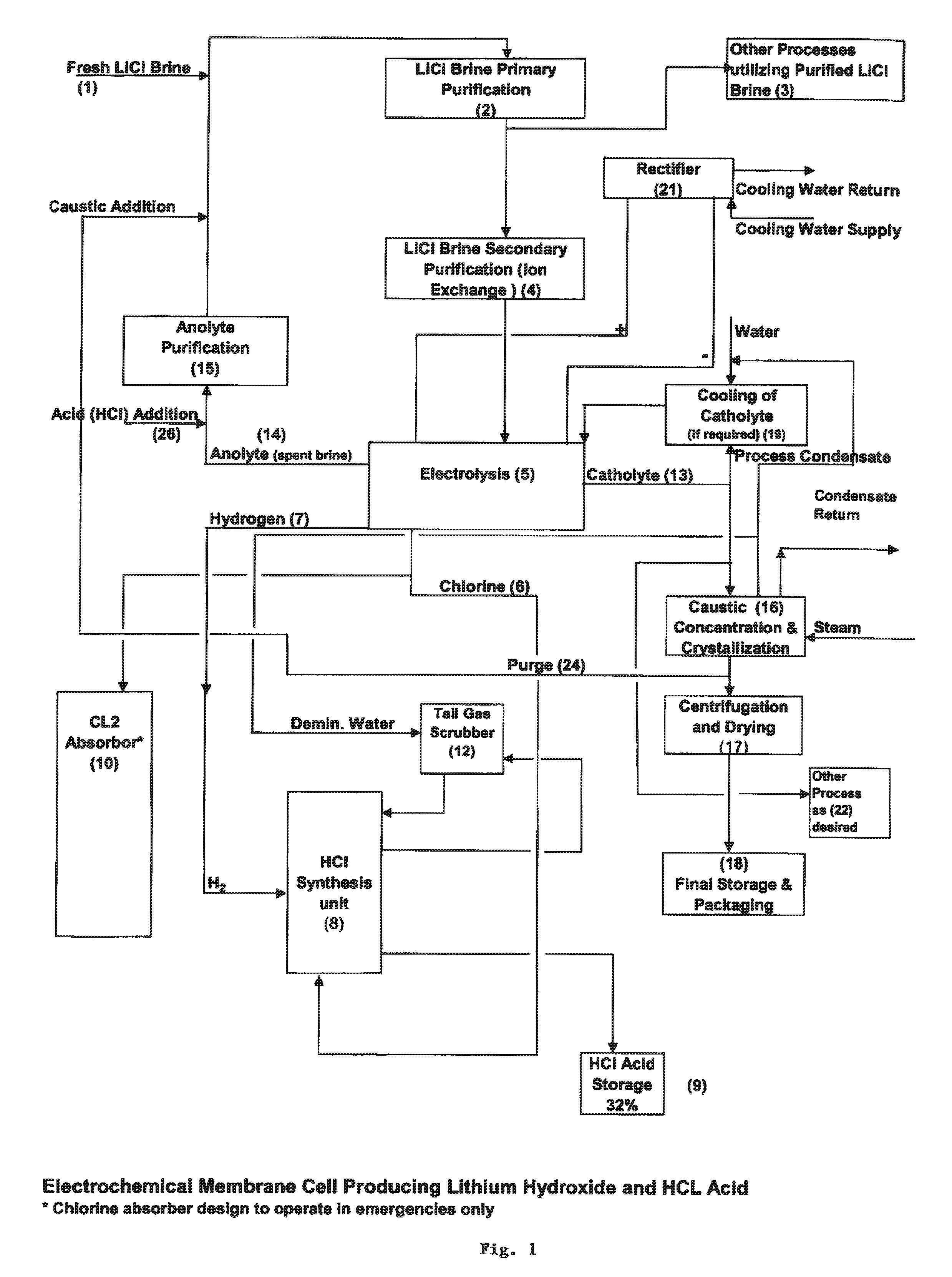Method of making high purity lithium hydroxide and hydrochloric acid
- Summary
- Abstract
- Description
- Claims
- Application Information
AI Technical Summary
Benefits of technology
Problems solved by technology
Method used
Image
Examples
Embodiment Construction
[0049]The present invention generally relates to a process for producing either lithium hydroxide monohydrate, hydrochloride acid or both, by purifying a lithium containing brine that also contains sodium and optionally potassium to reduce the total concentration of calcium and magnesium to less than 150 ppb; electrolyzing the brine to generate a lithium hydroxide solution containing less than 150 ppb total calcium and magnesium, with chlorine and hydrogen gas as byproducts; and then performing at least one of the following steps: concentrating the lithium hydroxide solution to crystallize lithium hydroxide monohydrate crystals; or additionally producing hydrochloric acid via combustion of the chlorine gas with excess hydrogen.
[0050]In preferred embodiments, the process for the production of lithium hydroxide monohydrate and hydrochloride acid according to the present invention typically involves the steps of: concentrating a lithium containing brine via, e.g., solar evaporation or ...
PUM
 Login to View More
Login to View More Abstract
Description
Claims
Application Information
 Login to View More
Login to View More - R&D
- Intellectual Property
- Life Sciences
- Materials
- Tech Scout
- Unparalleled Data Quality
- Higher Quality Content
- 60% Fewer Hallucinations
Browse by: Latest US Patents, China's latest patents, Technical Efficacy Thesaurus, Application Domain, Technology Topic, Popular Technical Reports.
© 2025 PatSnap. All rights reserved.Legal|Privacy policy|Modern Slavery Act Transparency Statement|Sitemap|About US| Contact US: help@patsnap.com

